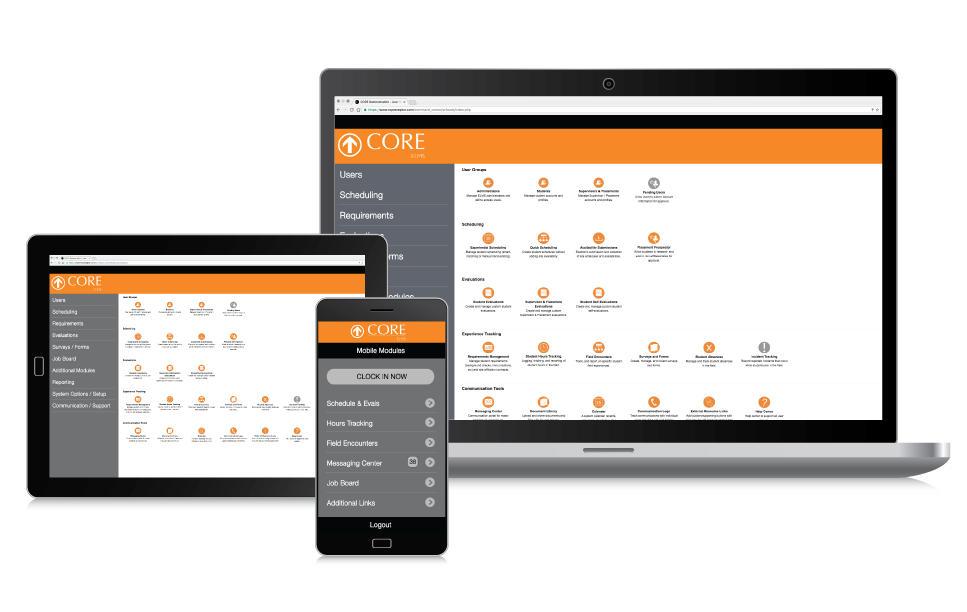Discover how to maximize the value of your experiential or clinical management software by leveraging the expertise of staff and implementing effective strategies.
Understanding the importance of staff training
To maximize the value of experiential or clinical management software in your education programs, it is crucial to prioritize staff training. When staff members become "super users" of the software, they can fully understand its capabilities and functionalities. With this comprehensive understanding, they can harness the software's full potential and configure its capabilities to meet the specific needs of your program. The outcome? Streamlined processes and elevated experiences for all program users, ensuring optimal results for everyone involved.
Staff training helps ensure that employees are proficient in using the software and can navigate its features with ease. This means less down time troubleshooting or requesting assistance.
Moreover, staff training promotes confidence and proficiency among program directors, coordinators, etc., which translates into higher levels of engagement and effectiveness in utilizing the software. When users are confident in their ability to use the software, they are more likely to explore its advanced features and functionalities, ultimately maximizing the value it brings to the educational program.
Identifying key features and functionalities
To maximize the value of the software, it is essential to identify the key features and functionalities that align with the specific needs of the experiential or clinical education program.
One way to identify key features and functionalities is to conduct a thorough analysis of the educational program's objectives and requirements. This analysis will help determine the software features that are most relevant and beneficial in achieving these objectives. It is important to involve key stakeholders, such as educators and administrators, in this process to ensure that their perspectives and needs are considered.
Additionally, staying updated with the latest advancements in education software can help identify new features and functionalities that could further enhance the learning experience. Regularly exploring software updates and attending training sessions or webinars can provide valuable insights into the software's potential and how it can be effectively utilized in the educational setting.
Promoting continuous learning and professional development
Maximizing the value of education software requires a commitment to continuous learning and professional development. As technology evolves and new updates are released, it is essential for staff members to stay updated and continually enhance their skills and knowledge.
Educational institutions can promote continuous learning by participating in ongoing training opportunities, such as workshops, webinars, or online courses. Consider utilizing the software provider's resources, including knowledge centers or client trainings. These opportunities allow staff members to explore new features, functionalities, and best practices for utilizing the software. By investing in professional development, institutions empower their staff to become proficient super users who can leverage the software to its fullest potential.
Furthermore, fostering a culture of continuous learning and innovation within the organization can encourage staff members to embrace new technologies and explore creative ways to incorporate the software into their teaching practices. By supporting staff in their professional growth, educational institutions can create an environment that maximizes the value of education software and cultivates a forward-thinking approach to experiential education.
Evaluating and measuring the impact of the software
To ensure you are extracting the full potential of the clinical or experiential management software, it is important to regularly evaluate and measure its impact on the experiential or clinical education program. This evaluation helps identify areas of improvement and provides insights into the software's effectiveness in achieving the program's goals.
One way to evaluate the impact of the software is through feedback surveys or interviews with super users, faculty, preceptors or instructors and students. Gathering their perspectives and experiences can shed light on the software's strengths and weaknesses, allowing for adjustments and improvements.
Additionally, collecting data on key metrics, such as task completion, and administrative efficiency, can provide quantitative insights into the software's impact. Analyzing this data can help identify trends, patterns, and areas where the software is making a significant difference.
By regularly evaluating and measuring the impact of the software, educational institutions can make informed decisions about its continued use and identify opportunities for further optimization. This iterative process ensures that the software continues to deliver maximum value and supports the growth and success of the experiential education program.
Participating in feedback surveys or interviews held by the software provider will also provide them with the opportunity to make updates and develop new features that would make your life easier.
CORE Higher Ed Team
Author




